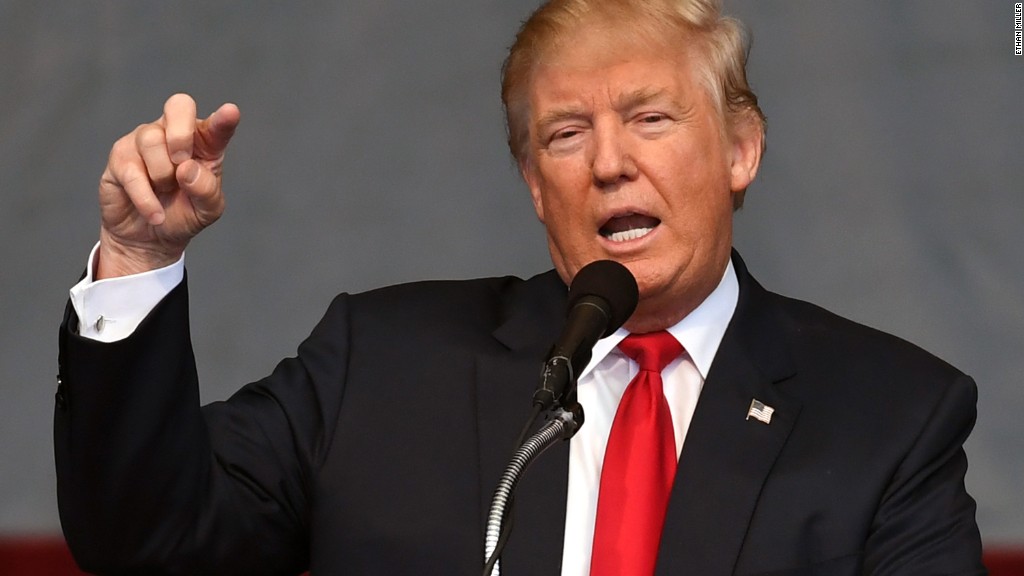
Anyone looking for clues as to what President Trump might include in his much-promised revamp of his tax reform proposal may have gotten a clue over the weekend.
Or not.
In an interview with Jesse Watters of Fox News, Trump reiterated his oft-stated desire to cut taxes for everyone -- both businesses and individuals. He also noted that the number of tax brackets would be reduced "from seven to three or four."
That might signal a change from his latest proposal in which he called for just three brackets -- a 12% bracket, a 25% bracket and a 33% bracket -- just as the House Republican's tax reform blueprint does.
Related: How Paul Ryan and Donald Trump differ on tax reform
Trump then went on to say, "I'd like to see 0[%] if you don't make much, like 0. That's what it's going to be, it's going to be 0 up to a level."
In other words, the first $X you earn would be taxed at 0%. And that 0% is possibly the fourth bracket to which Trump alluded.
But here's the thing: Under today's code, the standard deduction effectively serves as a 0% rate, said Len Burman, a former deputy assistant secretary for tax analysis at Treasury.
That is, your adjusted gross income is automatically reduced by $6,300 if you're single, or by $12,600 if you're married filing jointly. So it removes that amount from your federal taxable income.
Both Trump and the House GOP blueprint have already proposed greatly increasing the standard deduction. House Republicans would nearly double it while Trump would go farther -- raising it to $15,000 for singles and $30,000 for married couples.
"Having both (a 0% bracket and a standard deduction) wouldn't make much sense," said Roberton Williams, a senior fellow at the Tax Policy Center.
So perhaps the president was suggesting that the newest iteration of his tax reform proposal would offer a 0% bracket in place of a bigger standard deduction. Or maybe he was merely emphasizing the effect a larger standard deduction would have for those who don't earn much. Or maybe he was just hinting that his next plan will do a better job of not increasing taxes for some low- and moderate income parents, who might be hurt by various other changes he called for, such as a repeal of certain exemptions and the head of household status.
Trump also suggested that in his next tax proposal the first rate above 0% might be different than in his latest version. But he wasn't specific on what the final numbers would be.
"Then it's going to be 12.5%, 15%, it's going to be 10%. We're working on the different numbers."
Related: 6 reasons tax reform may not happen this year
It's not clear when the White House will put forth a new proposal.
What seems increasingly evident, however, is that tax reform will not be completed this summer as originally promised and possibly not even this year. True tax reform is always harder than it seems. Plus, the process of repealing and replacing Obamacare is taking longer than expected and will push aside tax reform until lawmakers can come to some agreement.


